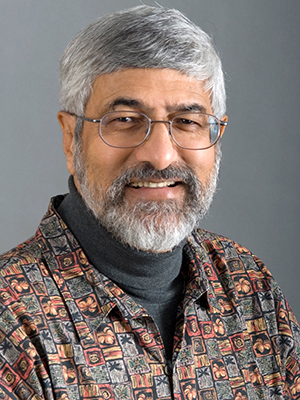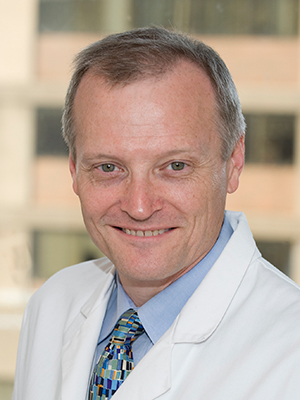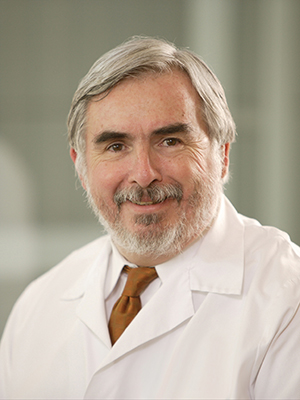My family is of Asian descent. How can I find a doctor for my parents who will understand and respect their traditions?

Dileep G. Bat, Professor in the Cancer Prevention and Control Program, University of Hawaii Cancer Center, Kauai, and Chair, Intercultural Cancer Council Photo courtesy of Dileep G. Bat
Dileep G. Bal: You are right to have this concern. There is a vast body of literature that shows cultural competency among physicians affects outcomes and is fundamental in cancer prevention, early detection and treatment.
Doctors who are culturally competent take into account the cultural mores, barriers and conditions that are acceptable and unacceptable for their patients. They also are aware of cultural practices that can influence lifestyle choices. For example, in the Pacific Islander population, where being obese is culturally desirable, talking about obesity and the need for physical activity can conflict with cultural mores. In Japan, there is a high incidence of stomach cancer, which has been linked to food preservation methods such as smoking, salting and pickling that have a long history in that culture. This could be discussed with Japanese patients.
You want to also make sure that any doctor you see is able to speak your parents’ language, or has someone on staff who does. Many hospitals have translators on staff. If yours doesn’t, you may have to provide that service. It’s best to obtain a professional interpreter through an agency, rather than a friend. Another option is a phone interpretation service like the one provided by the Asian Health Services’ Language and Cultural Access Program.
Depending on where you live, you may be able to find a medical group that includes physicians from your culture. If you identify a potential doctor, you should look to see if he or she is licensed and board-certified. There are many rating services you can use to obtain this information. I would then contact the doctor and see—especially if it’s a prolonged illness—if you are compatible.
Communication is key when relaying information about a cancer diagnosis and treatment plan. In some cultures, examining a woman without another woman present is a concept that needs a lot of explanation, and something the doctor also may need to address. If you’re having a problem receiving culturally competent care, ask if the hospital has a cultural liaison—a volunteer or employee who focuses on managing differences between your culturally based needs and the preferences of your doctor.
CULTURALLY APPROPRIATE CARE // Health Information Translations offers health information in a variety of languages in culturally appropriate ways. // Canadian Cancer Society provides links to cancer-related websites in other languages. // Cancer Education and Cultural Awareness Project provides programs and training to promote culturally competent care in hospitals and other medical establishments. // Intercultural Cancer Council promotes policies, programs and research to reduce cancer incidence among racial and ethnic minorities in the U.S. and associated territories.
How can we find out if my husband qualifies for access to a new drug now in clinical trials through a compassionate drug use program?

John Marshall, Chief of Hematology and Oncology, MedStar Georgetown University Hospital, Washington, D.C. Photo by Herman Farrer Photography
John Marshall: Some patients with metastatic cancer that is not responding to standard therapies become interested in trying a new drug that has had positive results in clinical trials but has not been approved by the U.S. Food and Drug Administration (FDA). If this is your husband’s situation, he may be eligible for a compassionate drug use program that provides access to new, unapproved drugs when no other options are available.
The Expanded Access Program (EAP) offers eligible patients early access to a drug that is heading for approval outside of a clinical trial. Patients who get a drug through an EAP are monitored for side effects, and to see if the medicine works. Not every doctor and not every patient can gain access to an EAP. There are specific centers in certain cities that are granted access, and there’s often a cap on the number of patients who can get the drug. EAPs open for enrollment are listed on clinicaltrials.gov.
It is sometimes possible for a patient to obtain an off-label medicine or a research medicine outside of an EAP. Many pharmaceutical companies have a process that allows a physician to apply to the FDA, with their support, for single-patient compassionate use access. Depending on the drug, the situation has to be defended by the patient’s physician and go through the hospital’s institutional review board quickly. This process is usually reserved for patients who want medicines for rare cancers. Someone with a more common cancer will have a harder time. And there must be very strong science to support the idea that the medicine will help that one patient. It’s not just, “That sounds good; let me try it.”
It’s rare for a medical team, the drug company and the FDA to all agree that a drug should be used for a single patient. Then there’s the issue of insurance coverage. With the increased cost of medicines, insurance companies are now more closely monitoring off-label use and will often not approve coverage of a medicine outside of the standard indications.
We understand patients are willing to try almost anything, but we always have to balance that desire with the knowledge that some medicines might hurt the patient and might make things worse. That’s why these checks are put in place.
TREATMENT ACCESS // The National Cancer Institute’s clinical trials website includes Expanded Access Programs. // The U.S. Food and Drug Administration lists the documentation doctors need to provide to request an experimental drug for an individual patient. // CancerActionNow helps patients identify options if their cancer is not responding to traditional therapies.
I know that smoking increases my risk of cancer. And I’ve tried to quit—many times. What can I do differently this time?

Frederic W. Grannis Jr., Clinical Professor of Thoracic Surgery, City of Hope National Medical Center, Duarte, Calif. Photo courtesy of City of Hope National Medical Center
Frederic W. Grannis Jr.: There’s no question that it’s very difficult to quit smoking. On average, it takes five to seven attempts at quitting before a person is successful. But it can be done. More than half of the people in the U.S. who have been active smokers have quit.
The first thing you should do is get counseling. The American Cancer Society (ACS) and the American Heart Association (AHA) have great phone and web-based programs for people who want to quit smoking. A good program is one that is tailored to the smoker’s needs, and includes social support, in addition to offering information about nicotine-replacement products. There is also a national quitline (800-QUIT-NOW) on which you can speak to a trained counselor about what options are best for you.
One of the best ways to quit is to take part in a six-week, in-person course. These can be arranged through the ACS, the American Lung Association and the AHA. In addition, hospitals, employers and your health insurance company may also offer a quit-smoking service. There are also a few prescription medications, like Zyban (bupropion) and Chantix (varenicline), which have been shown to be effective for smoking cessation in prospective randomized trials, that you can try.
As you probably already know, people who smoke are 15 to 30 times more likely to get lung cancer or die from lung cancer than people who do not smoke. Quitting will stabilize your risk of lung cancer, which means your risk will not increase more than what it is today. But you still have a residual risk, and that’s where lung cancer screening comes in. For heavy smokers, screening has been shown to help prevent lung cancer deaths. The American Society of Clinical Oncology and the National Comprehensive Cancer Network recommend low-dose CT screening for former smokers and smokers ages 55 to 74 who have smoked 30 pack-years or more, and either continue to smoke or have quit within the past 15 years. [A pack-year is equivalent to smoking a pack a day for a year.] The American Association of Thoracic Surgeons extends the recommendation for CT screening to high-risk individuals between 50 and 79 and also includes patients who have survived a prior cancer caused by tobacco products.
No matter how long you’ve smoked, when you quit, you’ll begin to see immediate benefits. Damage to the cells of the breathing passage ceases, measures of respiratory function improve somewhat, cough usually diminishes and taste of food begins to return toward normal. Most important, the progressive deterioration of breathing function stops and begins to parallel that of a non-smoker.
QUIT-SMOKING RESOURCES // smokefree.gov offers a step-by-step quit guide online and tools to help you quit. // North American Quitline Consortium provides information about free quitlines in your state, free web-based services, and free and discounted cessation medications. // Helpguide.org stresses the importance of emotional well-being and behavioral changes in quitting.
Cancer Today magazine is free to cancer patients, survivors and caregivers who live in the U.S. Subscribe here to receive four issues per year.




